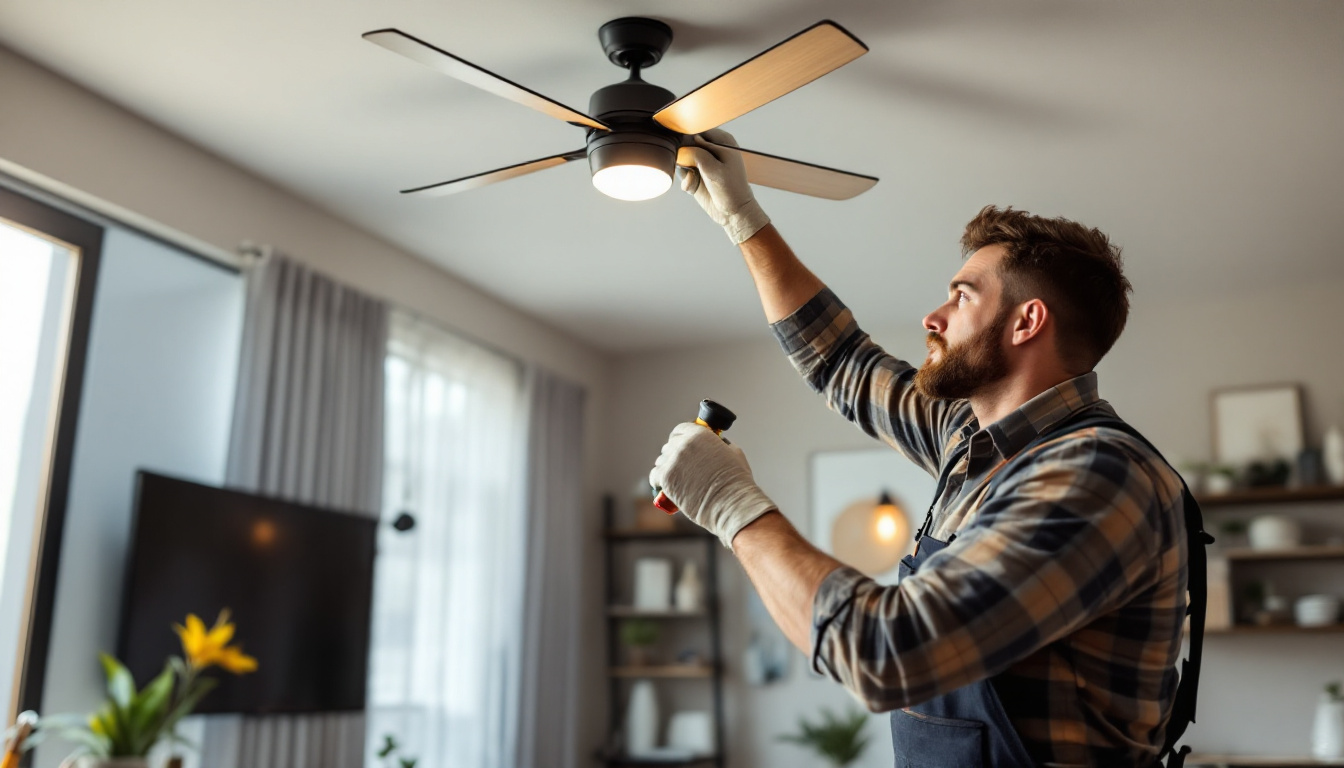
As the demand for energy-efficient lighting solutions continues to rise, LED tape lights have emerged as a popular choice among both residential and commercial clients. These versatile lighting fixtures offer a range of applications, from accent lighting to task illumination. However, lighting contractors often encounter various challenges when working with LED tape lights. Understanding these issues and implementing effective strategies can lead to smoother installations and satisfied clients. This article explores common pitfalls and offers practical solutions for lighting contractors.
LED tape lights, also known as LED strip lights, are flexible circuit boards populated with light-emitting diodes (LEDs). They are available in various colors, brightness levels, and lengths, making them suitable for a wide array of applications. Their flexibility allows them to be installed in tight spaces, around corners, or even cut to fit specific lengths, providing a customizable lighting solution. This adaptability not only enhances aesthetic appeal but also improves functionality in various settings, making LED tape lights a popular choice among designers and homeowners alike.
Moreover, the energy efficiency of LED technology means that these tape lights consume significantly less power than traditional incandescent or fluorescent lighting. This not only translates to lower electricity bills but also contributes to a reduced carbon footprint, making them an environmentally friendly option. With advancements in LED technology, many of these tape lights now come with features such as dimmability and smart controls, allowing users to adjust brightness and color temperature to suit their preferences and needs.
LED tape lights can be used in numerous settings, including residential, commercial, and industrial environments. They are often employed for:
With such versatility, it’s essential for contractors to understand the specific requirements of each application to avoid common pitfalls. For instance, when using LED tape lights in a kitchen, it’s crucial to consider the color temperature, as warmer tones can create a cozy atmosphere, while cooler tones may enhance visibility for food preparation. Additionally, the placement of these lights can significantly impact their effectiveness; under-cabinet lighting can illuminate countertops, while cove lighting can add depth to a room.
There are several types of LED tape lights available, each with unique characteristics. Some common types include:
Understanding the differences between these types can help contractors recommend the best solution to their clients. For instance, RGB tape lights are particularly popular for entertainment spaces, where changing colors can enhance the ambiance during movie nights or parties. On the other hand, RGBW strips are favored in areas where both vibrant colors and the ability to switch to a warm white light are desired, such as living rooms or dining areas, allowing for a seamless transition from lively gatherings to intimate dinners.
While LED tape lights offer numerous benefits, they also present specific challenges that can lead to installation issues. Being aware of these common problems can help contractors avoid costly mistakes and ensure successful projects.
One of the most significant issues contractors face is selecting the appropriate power supply for LED tape lights. LEDs require a constant voltage, and using the wrong power supply can lead to flickering, dimming, or even damage to the lights.
Contractors should ensure that the power supply matches the voltage rating of the LED tape light. Additionally, it’s crucial to calculate the total wattage required for the installation, as exceeding the power supply’s capacity can result in overheating or failure. It’s also advisable to factor in a safety margin, typically around 20%, to accommodate any future expansions or unforeseen power demands. This foresight can prevent potential issues down the line and ensure a more robust lighting solution.
LEDs generate heat, and if not managed correctly, this can lead to reduced lifespan and performance. Contractors must consider the installation environment and ensure adequate ventilation, especially in enclosed spaces. Using heat sinks or ensuring proper spacing between strips can help dissipate heat effectively.
Moreover, selecting high-quality LED tape lights with built-in thermal management features can mitigate overheating issues. This proactive approach can enhance the longevity and reliability of the lighting solution. Additionally, contractors should be aware of the ambient temperature conditions where the lights will be installed, as extreme temperatures can further exacerbate heat-related problems. Implementing temperature monitoring systems can also provide valuable insights into the performance of the installed lights, allowing for timely interventions if necessary.
LED tape lights typically come with an adhesive backing for easy installation. However, improper surface preparation can lead to adhesion failures. Contractors should ensure that surfaces are clean, dry, and free from dust or grease before applying the tape.
In some cases, additional mounting methods, such as clips or channels, may be necessary to secure the tape lights properly. This is especially true in high-traffic areas or where the lights may be subjected to moisture or temperature fluctuations. Furthermore, understanding the specific materials of the surfaces being used can also play a critical role in adhesion success. For instance, porous materials may require a primer or additional adhesive to ensure a strong bond. Contractors should also consider the long-term effects of environmental factors such as humidity and UV exposure, which can degrade adhesive properties over time, leading to premature failures. By taking these factors into account, contractors can significantly enhance the durability and effectiveness of their LED tape light installations.
To avoid common issues and ensure successful LED tape light installations, contractors can adopt several best practices. These strategies not only enhance the quality of the work but also improve client satisfaction.
Before starting any installation, it’s essential to plan and design the lighting layout carefully. This includes determining the appropriate type of LED tape light, calculating the necessary lengths, and identifying power supply requirements.
Creating a detailed lighting plan can help visualize the final result and ensure that all components work harmoniously together. Engaging clients in this process can also help manage expectations and foster a collaborative relationship.
Investing in high-quality LED tape lights and accessories can significantly reduce the likelihood of issues during installation and over time. Contractors should prioritize reputable brands known for their reliability and performance.
Additionally, understanding the specifications of the products being used—such as lumen output, color temperature, and CRI (Color Rendering Index)—can help ensure that the lighting meets the client’s needs.
The lighting industry is continually evolving, with new technologies and products emerging regularly. Lighting contractors should prioritize ongoing education and training to stay updated on the latest trends, techniques, and best practices.
Participating in workshops, webinars, or industry conferences can provide valuable insights and networking opportunities. This knowledge can empower contractors to make informed decisions and offer innovative solutions to their clients.
Clients often have specific concerns regarding LED tape lights, ranging from energy efficiency to installation costs. Addressing these concerns effectively can enhance client trust and lead to successful projects.
One of the primary advantages of LED tape lights is their energy efficiency. Compared to traditional lighting options, LEDs consume significantly less power while providing the same or greater illumination levels. Contractors should educate clients on the long-term cost savings associated with LED lighting, including reduced energy bills and lower maintenance costs due to the extended lifespan of LEDs.
Providing clients with comparisons between LED tape lights and other lighting solutions can help them understand the value of their investment. This transparency fosters trust and encourages clients to choose LED options confidently.
Clients may be concerned about the time and complexity involved in installing LED tape lights. Contractors should provide clear timelines and explain the installation process in simple terms. Highlighting the ease of installation for LED tape lights, especially with adhesive backing, can alleviate client concerns.
Moreover, offering a detailed breakdown of the installation steps can help clients feel more informed and engaged in the process. This approach can lead to a smoother installation experience and increased client satisfaction.
Providing post-installation support is crucial for maintaining client relationships and ensuring the longevity of the lighting solution. Contractors should consider implementing a follow-up process to address any issues that may arise after installation.
Educating clients about the maintenance requirements of LED tape lights can help prevent issues down the line. Contractors should provide guidance on cleaning methods, troubleshooting common problems, and when to seek professional assistance.
Offering a warranty or service plan can also enhance client confidence in the installation. This commitment to quality and support can lead to repeat business and referrals.
Encouraging client feedback after the installation can provide valuable insights into the effectiveness of the lighting solution and the overall client experience. This feedback can help contractors identify areas for improvement and adapt their practices accordingly.
By fostering an open line of communication, contractors can build lasting relationships with their clients and establish a reputation for reliability and quality.
LED tape lights offer an array of benefits, but they also present unique challenges for lighting contractors. By understanding common issues and implementing best practices, contractors can avoid pitfalls and ensure successful installations. Thorough planning, quality product selection, ongoing education, and effective communication with clients are essential components of a successful lighting project.
Ultimately, the goal is to provide clients with a lighting solution that meets their needs while enhancing the aesthetic and functionality of their spaces. By prioritizing quality and support, lighting contractors can establish themselves as trusted professionals in the industry, paving the way for future success.
Ready to elevate your lighting projects with the highest quality LED tape lights? Look no further than LumenWholesale, where we offer spec-grade lighting products at unbeatable wholesale prices. Say goodbye to local distributor markups and hello to a vast selection of reliable, high-performance lighting that meets the most stringent industry standards. Plus, with free shipping on bulk orders, you can stock up on the best lighting solutions without worrying about hidden fees or compromises. Enhance your installations with the perfect blend of quality, affordability, and convenience. Visit LumenWholesale today for Wholesale Lighting at the Best Value.

Discover why Sylvania light bulbs are a top choice for lighting contractors.

Discover expert tips and exclusive deals on ceiling fans tailored for lighting contractors.

Discover innovative strategies and cutting-edge technologies that are transforming the lighting industry.

Discover the ultimate resource for lighting professionals with “Cablemaster: Lighting Contractors’ Guide.” This comprehensive article offers expert insights, practical tips, and innovative solutions to enhance your lighting projects, ensuring efficiency and excellence in every installation.